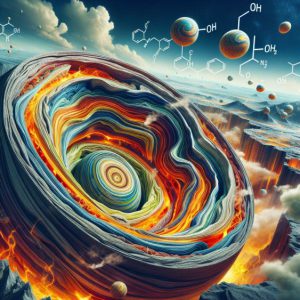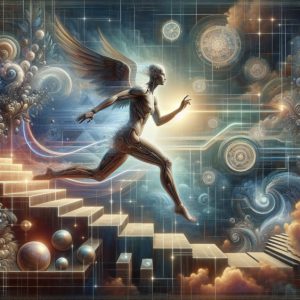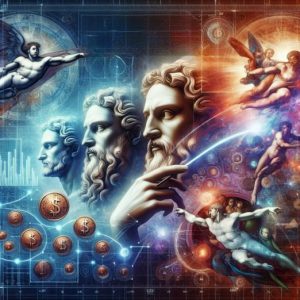Making Restoring Vision a Reality: Unveiling Hypotheses for Vision Restoration
Jan 31, 2024
Introduction: Understanding Vision Restoration
The intricate process of vision involves more than just our eyes. Like a sophisticated camera, our eyes capture light and convert it into electrical signals. These signals are then transmitted to the brain, where they are processed into the images we perceive. This complex process engages several parts of the brain, with over half of the cortex dedicated to processing visual information.
Despite the complexity of vision, recent scientific advances have brought us closer to making vision restoration a reality. These breakthroughs span various fields, including genetics, bionics, and stem-cell therapy, offering hope to those affected by retinal degeneration.
One promising approach to vision restoration is optogenetics, a technique that uses light to control cells in living tissue. This method has partially restored vision in a blind patient by combining intraocular injection of a viral vector with light stimulation via engineered goggles. This approach aims to enable a typically encoded output of the retina to the brain despite abnormal signal processing within the retina.
Another exciting development is the discovery that the brain can adapt to restoring eyesight. However, the rewiring of the senses that occurs in the brains of the long-term blind means that visual restoration may never be complete. This highlights the importance of understanding not just the eye, but the full visual pathway from the eye to the brain.
Moreover, the potential of stimulating mature Müller glia in the retina to produce rod cells has been explored. This treatment has been shown to restore visual responses in a model of congenital blindness, further expanding the possibilities for vision restoration.
While these advancements are promising, they also underscore the complexity of vision and the challenges in fully restoring it. The journey to restore vision is a testament to the resilience of the human spirit and the relentless pursuit of scientific discovery. As we unravel the mysteries of the eye and the brain, we move closer to making the dream of restoring vision a reality.
The Root Cause of Vision Problems
Many vision problems are not solely related to the eyes but are linked to the brain’s image-processing system. Damage to the areas of the brain responsible for sight can result in vision impairment. This damage can be caused by a variety of factors, including stroke, brain tumours, head injuries, and infections such as meningitis.
Vision impairment related to an acquired brain injury is due to damage to the brain and not the eyes. This type of vision loss, known as neurological vision impairment, can result from several causes, including stroke, brain tumour, head injury, and infections such as meningitis.
Moreover, traumatic brain injury (TBI) can also cause problems with vision. Depending on its location and severity, a TBI can affect vision by damaging parts of the brain involved in visual processing and perception.
Furthermore, certain medical disorders can also cause eye problems. For instance, vision problems can develop when a tumour places pressure on a particular brain area. The occipital lobe, responsible for processing everything a person sees, could cause various sight issues if a tumour is present in that brain region.
Hypothesis for Vision Restoration
Since the root cause of many vision problems lies in the brain, a potential approach to restoring vision could involve targeting these brain areas. This could involve a combination of therapies designed to stimulate and retrain the brain’s visual processing centres.
Neuroplasticity-Based Therapies
Neuroplasticity, the brain’s ability to reorganize itself by forming new neural connections, is critical to vision restoration. This process allows the brain to adapt and compensate for damage or dysfunction. Neuroplasticity-based therapies stimulate the brain’s visual processing centres, encouraging them to adjust and pay for any damage or dysfunction.
There are two main types of neuroplasticity: functional and structural. Functional neuroplasticity refers to the brain’s ability to move functions from a damaged brain area to other undamaged areas. Structural neuroplasticity refers to the brain’s ability to change its physical structure due to learning.
Neuroplasticity-based therapies can include physical exercises designed to stimulate the brain’s visual processing abilities, cognitive training to improve the brain’s ability to process visual information, and neuropharmacology to enhance the brain’s neuroplastic capabilities.
Advanced Biomedical Interventions
Alongside neuroplasticity-based therapies, advanced biomedical interventions can directly address physical issues affecting vision. These interventions can include gene therapy, stem cell therapy, and bionic implants.
Gene therapy involves introducing, removing, or changing genetic material within a person’s cells to treat or prevent disease. This approach has been used to treat certain forms of retinitis pigmentosa, a degenerative disease of the retina that causes night blindness and gradual vision loss.
Stem cell therapy involves using stem cells to regenerate damaged cells within the body. This approach can potentially treat various vision problems, from age-related macular degeneration to glaucoma.
Bionic implants, such as the Argus II Retinal Prosthesis System, can restore some vision in people who are blind or visually impaired. These devices convert images into electrical signals that the brain can interpret.
Vision Enhancing Gadgets and AI-Based Vision Enhancement
There are several vision-enhancing gadgets currently on the market or in development. These include smart glasses that can enhance vision for people with low vision and wearable devices that can provide auditory or tactile feedback to help visually impaired people navigate their environment.
AI-based vision enhancement involves the use of artificial intelligence to improve vision. This can include AI algorithms that can enhance images in real-time, making it easier for people with low vision to see and AI systems that can provide descriptive information about the visual environment to assist people who are blind or visually impaired.
In conclusion, while the root cause of many vision problems can be traced back to issues with how the brain processes visual information, various cutting-edge research and treatments are being developed to address these problems. These advancements promise to improve the lives of those affected by vision loss.
Optogenetics: A Beacon of Light
Optogenetics is an exciting field of research that combines genetic and optical methods to control specific events in targeted cells of living tissue. In the context of vision restoration, optogenetics can potentially enable light-sensitive proteins to be introduced into the retina, thereby restoring light sensitivity where it’s been lost.
In January 2021, a landmark paper published in “Nature Medicine” reported the first successful use of optogenetics to restore sight in a man suffering from retinitis pigmentosa. This degenerative disease leads to blindness. The patient was given a specially designed pair of goggles that convert visual stimuli into monochromatic images, which were then projected onto the retina as amber light. This treatment allowed him to recognise, count, locate and touch different objects using the treated eye, which was blind before the treatment.
While optogenetics is not a complete cure for blindness, as it doesn’t fully restore normal vision, it offers hope. It’s a revolutionary approach that could substantially improve the quality of life for individuals with vision impairment. The success of the initial trials points to the future potential of this method, and ongoing research is likely to refine and improve upon these early results.
Neuralink: A Vision of the Future
Neuralink, a neurotechnology company co-founded by Elon Musk, is working on implantable brain–machine interfaces (BMIs). While the primary goal of Neuralink is to allow humans to keep pace with AI by supplementing our cognitive abilities, its technology could also have significant implications for vision restoration.
The Neuralink device, a small chip implanted into the brain, could bypass damaged optical nerves to restore vision. The concept would involve capturing images from a camera, converting these images into electrical signals, and then sending these signals directly to the brain’s visual cortex, bypassing the eyes and optic nerves entirely.
While this technology is still in its early stages, it can potentially restore functional sight to those who have lost it due to optic nerve damage or degenerative eye diseases. In August 2020, Musk stated in a live demonstration that Neuralink has already restored some level of vision in pigs. The next stage would be to test in humans.
These experimental therapies – optogenetics and Neuralink – represent the cutting edge of vision restoration. They promise to overcome limitations and open up new possibilities for treating blindness and vision impairment. Although both are still in the relatively early stages of development, their potential benefits are enormous, making them exciting areas to watch in the years to come.
Feed Your Intellect: Articles for the Mind

Glucose Syrup vs. Corn Syrup: A Sweet Showdown

Which of the Following Is True of Portfolio Diversification?

Early Retirement Extreme Summary: Facts Minus the Fluff

Considering the Impact of Inflation, Why Is Investing Important for Long-Term Financial Stability?

Why is Investing a More Powerful Tool to Build Long-term Wealth Than Saving

Beetroot Benefits for Men: Extraordinary Potential, Humble Root

Best Saffron Supplement: Unveiling its Tantalizing Health Benefits

Milk Thistle for Dogs: Unveiling the Enigma of Canine Well-being

Revealing the Hidden Dangers: Toxic Ingredients in U.S. Foods

Fully Hydrogenated Oil: Tasty Threats With Deadly Effects

Restoring Vision: Exploring Hypotheses for Vision Rehabilitation

Rediscover Vitality: Age Defying Strength with Mumio Supplement

Inductive vs Deductive Arguments: Strategies for Sound Reasoning

Restoring Vision Naturally: Uncomplicated and Effective Solutions

Alpha-Ketoglutarate: Pinnacle of Vitality for Longevity and Optimal Health
Saffron Supplement: Unveiling its Tantalizing Health Benefits



